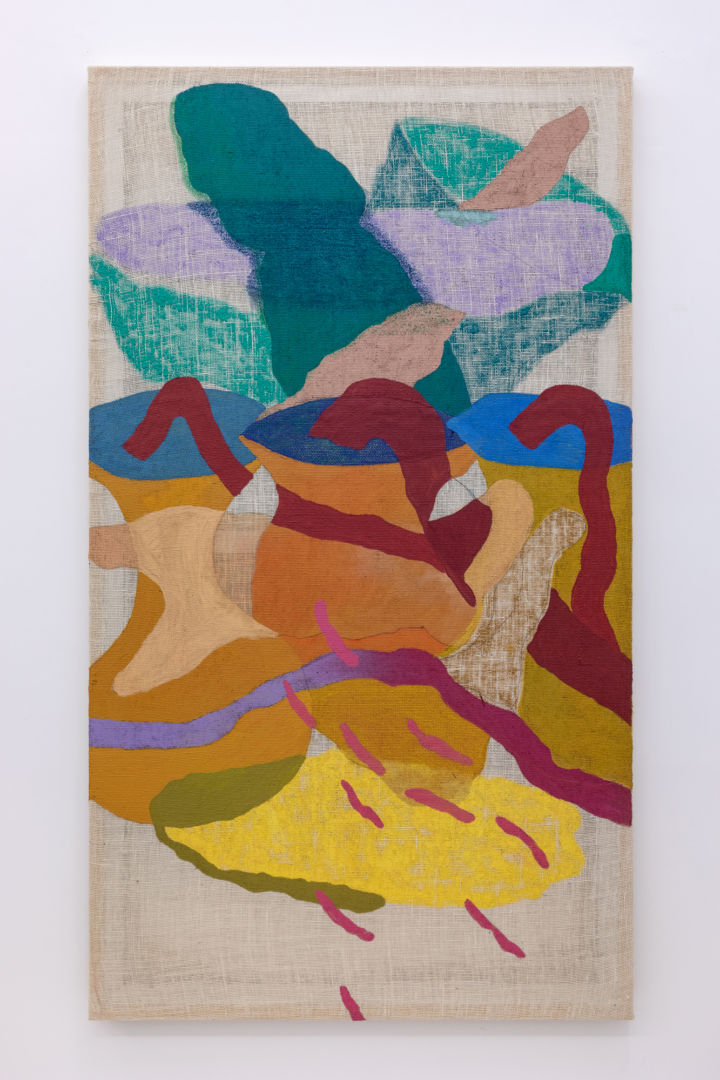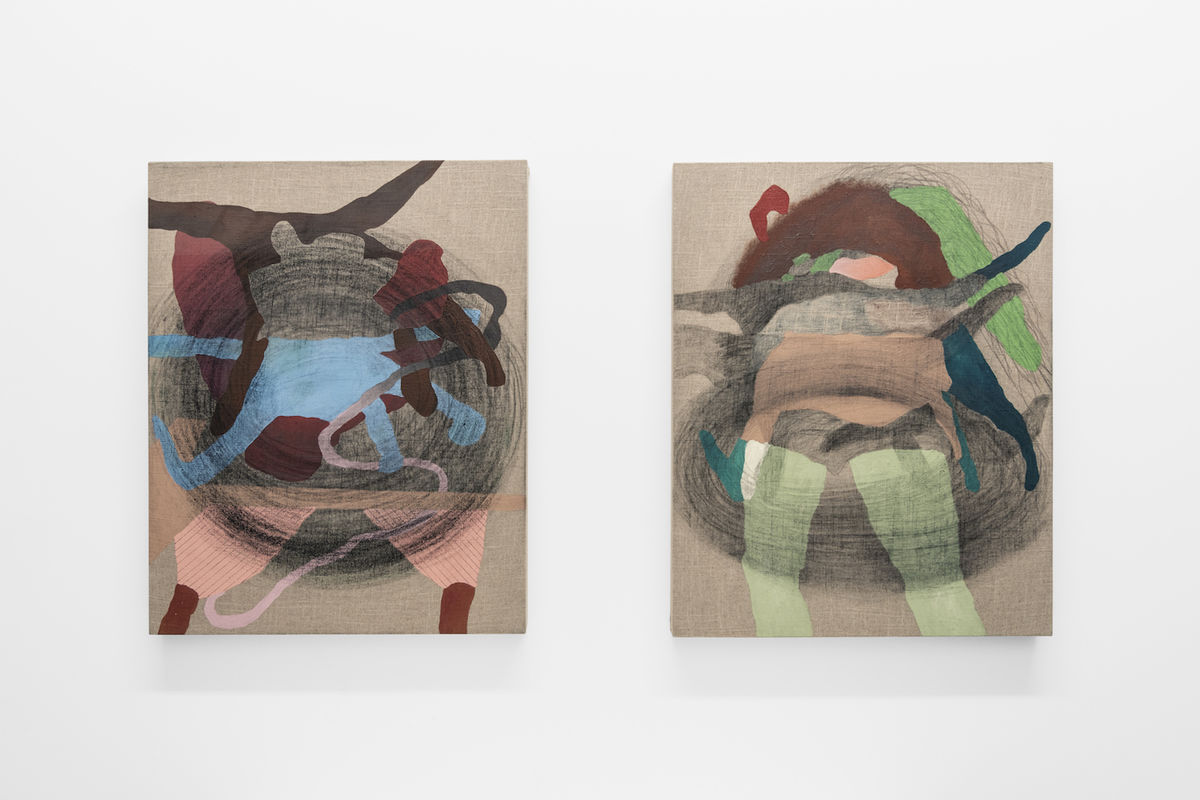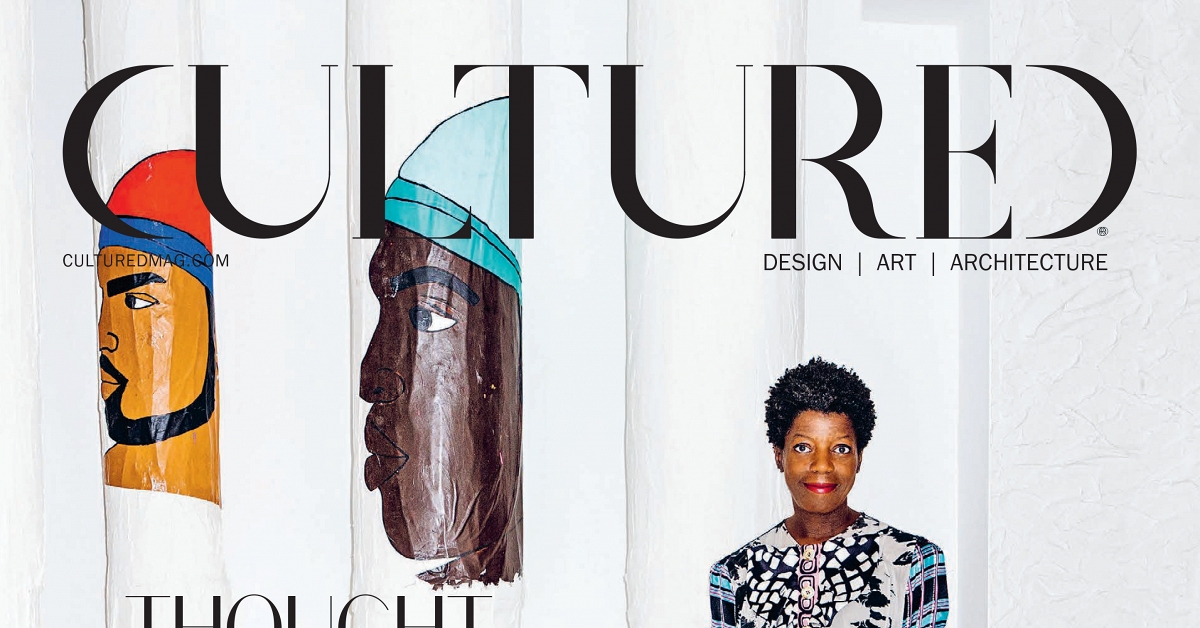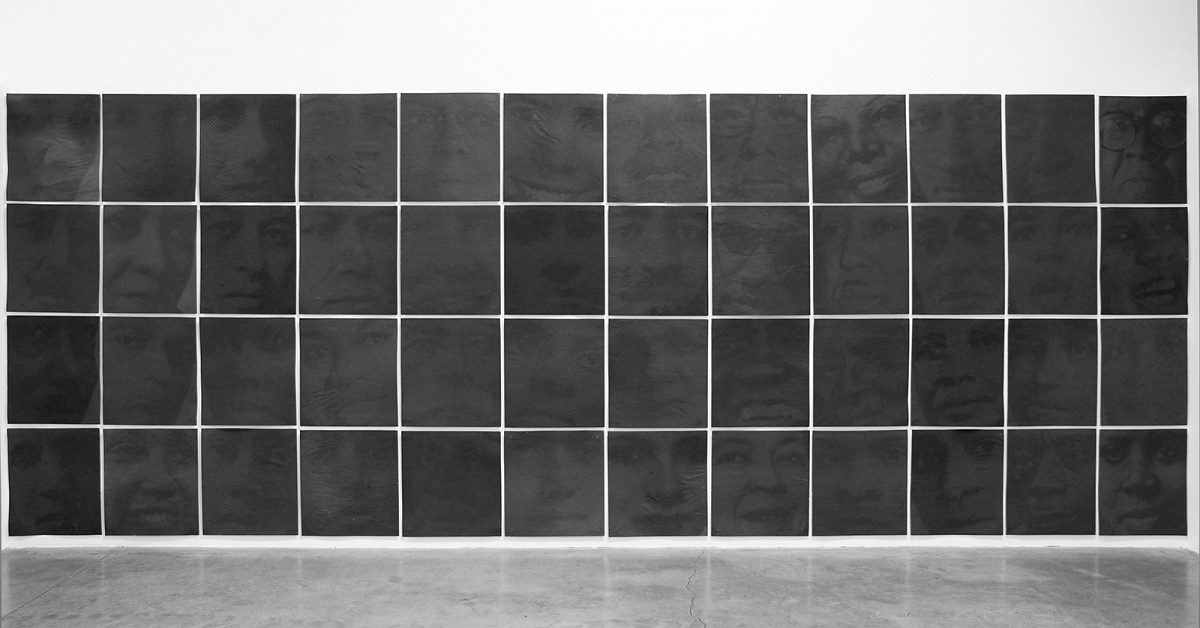Contemplating Art and Optimism at a Former Meat-processing Plant
Hyperallergic / Jul 22, 2020 / by Andrea Gyorody / Go to Original
At a moment when so many of us are missing physical touch and closeness, the richly colored, relentless tactility of Hildur Ýsgeirsdóttir Jónsson and Kaveri Raina’s works resonate all the more deeply.
CLEVELAND, Oh. — When I recently walked into Abattoir Gallery for the first time, I was greeted with rainbows. Delicately drawn on tissue-thin Abaca paper, arcing over sparse landscapes, their buoyancy felt incongruous, mocking even. After all, I had just checked in with a masked attendant, who gestured to a table of amenities, including masks, sanitizer, and pre-packaged snacks. It occurred to me that I was also standing in a former meat-processing plant, having listened on the drive over to a podcast about outbreaks of COVID-19 at industrial meat plants elsewhere in the Midwest.
Despite my anxieties about aerosols and anti-maskers, I had come to Abattoir to escape the day-to-day dystopia, or to try to, for an hour. I moved on from the rainbows, drawn by Cleveland-based artist Hildur Ýsgeirsdóttir Jónsson, to a series of her textile paintings — ethereal, abstracted landscapes woven from silk thread that Jónsson paints directly. She dyes the warp and weft separately, allowing chance to enter the work when the two come together, alternately creating saturation and diffusion.
Here, again, were rainbows, this time fragmented against a peach background, imitating the atmospheric effect of refracted light. Several other works on view turn up the intensity, zeroing in — as if through a microscope — on lichen formations rendered in vibrant, acid-neon hues of lime, magenta, and fluorescent yellow. Adapted from photographs taken in her native Iceland, Jónsson’s paintings bear a haziness that feels almost Richter-esque, nodding to the relationship between photography and memory, and to the ephemerality of the natural world.
 Kaveri Raina, Dodo’s Assortment (2019), acrylic and oil pastel on burlap, 70” x 40” (image courtesy the artist).
Kaveri Raina, Dodo’s Assortment (2019), acrylic and oil pastel on burlap, 70” x 40” (image courtesy the artist).
Where Jónsson brings warp and weft into harmony, New York-based artist Kaveri Raina applies paint to both sides of coarse burlap, smearing and caking the paint with a pressure that pushes the fibers apart. In the standout work of the show, “Dodo’s Assortment” (2019), some of the paint ekes through to the front, while other passages remain pure shadow, suggesting something lurking beneath the surface. Raina’s palette of jewel tones and ocher conveys warmth and pleasantness, but the work ultimately subverts the decorative, as fleshy shapes intersect with bits of still life, hinting at a Surrealist approach to form and its permeability. (That Abattoir’s first show would invoke Surrealism is apropos, as abattoir is a word I will forever associate with French writer Georges Bataille.)
Limbs, torsos, and serpentine squiggles float, collide, and merge into one another across Raina’s compositions. In “Vortex to Hover” and “Hovering Stance” (both 2019), the artist has aggressively drawn swirling vortices in graphite over layered, biomorphic forms. Paired in the gallery’s intimate back room, these works substitute linen for burlap, but the force of the pencil tugging at fabric from all directions has warped the woven grid, creating a subtle sense of vertigo as the drawing pulls you in. At a moment when so many of us are missing physical touch and closeness, the relentless tactility of Raina’s work resonates all the more deeply.
 Installation view of Kaveri Raina, Hovering Stance and Vortex to Hover (both 2018-19), acrylic and graphite on linen, 30” x 24” (photo by Field Studio)
Installation view of Kaveri Raina, Hovering Stance and Vortex to Hover (both 2018-19), acrylic and graphite on linen, 30” x 24” (photo by Field Studio)
My hour of respite already over, I paused at Jónsson’s rainbows before leaving, taking them as a reminder that there was cause for hope: here I was visiting a new gallery in a city largely absent a robust gallery culture, in a 19th-century building that had survived plagues before this one and was now slated to become a cultural hub for the neighborhood (ironically through a partnership with MetroHealth, one of Cleveland’s major public health systems). I tried to observe, for a moment, that optimism was possible, before squeezing sanitizer into my palm and stepping back into the muggy afternoon.
CLEVELAND, Oh. — When I recently walked into Abattoir Gallery for the first time, I was greeted with rainbows. Delicately drawn on tissue-thin Abaca paper, arcing over sparse landscapes, their buoyancy felt incongruous, mocking even. After all, I had just checked in with a masked attendant, who gestured to a table of amenities, including masks, sanitizer, and pre-packaged snacks. It occurred to me that I was also standing in a former meat-processing plant, having listened on the drive over to a podcast about outbreaks of COVID-19 at industrial meat plants elsewhere in the Midwest.
Despite my anxieties about aerosols and anti-maskers, I had come to Abattoir to escape the day-to-day dystopia, or to try to, for an hour. I moved on from the rainbows, drawn by Cleveland-based artist Hildur Ýsgeirsdóttir Jónsson, to a series of her textile paintings — ethereal, abstracted landscapes woven from silk thread that Jónsson paints directly. She dyes the warp and weft separately, allowing chance to enter the work when the two come together, alternately creating saturation and diffusion.
Here, again, were rainbows, this time fragmented against a peach background, imitating the atmospheric effect of refracted light. Several other works on view turn up the intensity, zeroing in — as if through a microscope — on lichen formations rendered in vibrant, acid-neon hues of lime, magenta, and fluorescent yellow. Adapted from photographs taken in her native Iceland, Jónsson’s paintings bear a haziness that feels almost Richter-esque, nodding to the relationship between photography and memory, and to the ephemerality of the natural world.

Where Jónsson brings warp and weft into harmony, New York-based artist Kaveri Raina applies paint to both sides of coarse burlap, smearing and caking the paint with a pressure that pushes the fibers apart. In the standout work of the show, “Dodo’s Assortment” (2019), some of the paint ekes through to the front, while other passages remain pure shadow, suggesting something lurking beneath the surface. Raina’s palette of jewel tones and ocher conveys warmth and pleasantness, but the work ultimately subverts the decorative, as fleshy shapes intersect with bits of still life, hinting at a Surrealist approach to form and its permeability. (That Abattoir’s first show would invoke Surrealism is apropos, as abattoir is a word I will forever associate with French writer Georges Bataille.)
Limbs, torsos, and serpentine squiggles float, collide, and merge into one another across Raina’s compositions. In “Vortex to Hover” and “Hovering Stance” (both 2019), the artist has aggressively drawn swirling vortices in graphite over layered, biomorphic forms. Paired in the gallery’s intimate back room, these works substitute linen for burlap, but the force of the pencil tugging at fabric from all directions has warped the woven grid, creating a subtle sense of vertigo as the drawing pulls you in. At a moment when so many of us are missing physical touch and closeness, the relentless tactility of Raina’s work resonates all the more deeply.

My hour of respite already over, I paused at Jónsson’s rainbows before leaving, taking them as a reminder that there was cause for hope: here I was visiting a new gallery in a city largely absent a robust gallery culture, in a 19th-century building that had survived plagues before this one and was now slated to become a cultural hub for the neighborhood (ironically through a partnership with MetroHealth, one of Cleveland’s major public health systems). I tried to observe, for a moment, that optimism was possible, before squeezing sanitizer into my palm and stepping back into the muggy afternoon.






